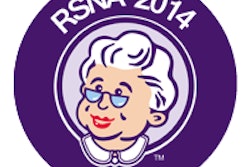Digital breast tomosynthesis (DBT) shows its greatest benefit when used to screen women younger than 50, according to research published October 13 in the Journal of the National Cancer Institute. DBT was effective in reducing recalls and increasing cancer detection in these younger women, who have been at the center of the controversy over breast screening.
While many studies of DBT have demonstrated positive results, most have been based on retrospective reader studies that compared screening using DBT combined with digital mammography to digital mammography screening alone. Such studies have shown reductions in false positives of up to 30% to 40%, as well as higher cancer detection rates, according to a research team led by Anne Marie McCarthy, PhD, from the University of Pennsylvania.
However, many of these trials had design issues, which could have led to results that differ from what might be experienced in a real-world clinical environment in the U.S., according to the authors (JNCI, October 13, 2014).
The university health system switched entirely to DBT screening in October 2011, and the researchers decided to report its experiences by comparing outcomes of a 17-month period with DBT-only screening with the 12-month period immediately prior, when only digital mammography was used for screening. McCarthy and colleagues originally presented their data at the 2013 RSNA meeting; they performed more detailed data analyses for the JNCI paper.
The researchers compared 15,571 women who received DBT screening with 10,728 women who were screened with digital mammography only. Outcomes were analyzed for each group as a whole, and the results were also further examined based on factors such as breast density and age.
For the entire population, the DBT group had a recall rate of 8.8%, compared with 10.4% for the digital mammography group, which is a reduction of 15% and works out to 16 fewer recalls per 1,000 women (p < 0.001). There was no statistically significant difference in the cancer detection rate for the entire group of women; 4.6 cancers were detected per 1,000 women for digital mammography, whereas 5.5 cancers were detected per 1,000 women for DBT (p = 0.32).
Things changed when the data were analyzed by age: For women younger than 50, DBT's cancer detection rate was nearly triple that of digital mammography, and the recall rate was also 12% lower, a statistically significant difference.
| DBT vs. digital mammography (DM) by age group | ||||
| All women | Women < 50 years | |||
| DM screening | DBT screening | DM screening | DBT screening | |
| Recall rate | 10.4%1 | 8.8%1 | 14.0%2 | 12.3%2 |
| Cancer detection rate | 4.6 per 1,0003 | 5.5 per 1,0003 | 2.2 per 1,0004 | 5.7 per 1,0004 |
"DBT had a statistically significantly lower recall rate irrespective of age; however, the impact was greater in women aged 50 years and older," the authors wrote. "Notably, the cancer detection rate nearly tripled with DBT screening compared with DM in women under age 50 years, equating to an additional 3.6 cancers detected per 1,000 screened."
The advantage that DBT showed in cancer detection rates in younger women has not been reported in other clinical trials, possibly because those trials were smaller, making it more difficult to analyze results by age, the authors noted. The results are similar to findings from the landmark Digital Mammographic Imaging Screening Trial (DMIST), which compared digital mammography to film-based screening.
While the recall rate in the trial was lower than in some clinical studies, the researchers said it was comparable to the rate in the Oslo Tomosynthesis Screening Trial by Skaane et al and in a recent study in the Journal of the American Medical Association by Friedewald et al.
McCarthy and colleagues also analyzed the results according to breast density. They found that DBT reduced the recall rate by a similar amount for women with dense and nondense breasts. DBT posted a 33% higher cancer detection rate in women with dense breasts compared to digital mammography.
The new findings indicate that DBT screening could be particularly useful for women in their 40s, the authors concluded.
"Our results of fewer recalls coupled with improvements in cancer detection supports earlier evidence that DBT is a promising new mammography screening technique, particularly for the controversial subgroup of women screened under the age of 50 years," they wrote.



















